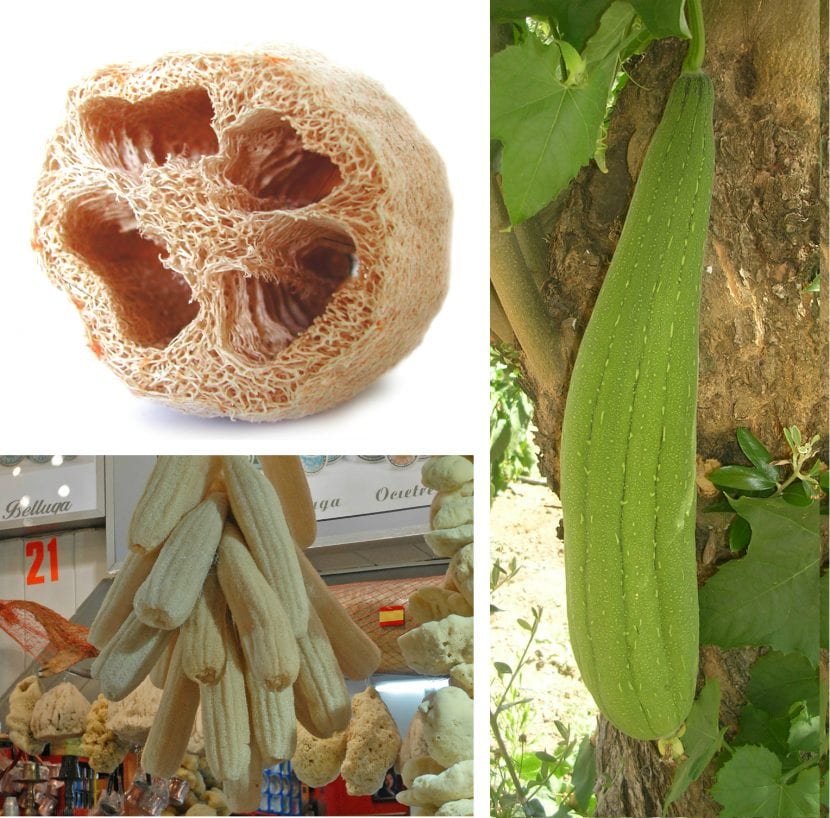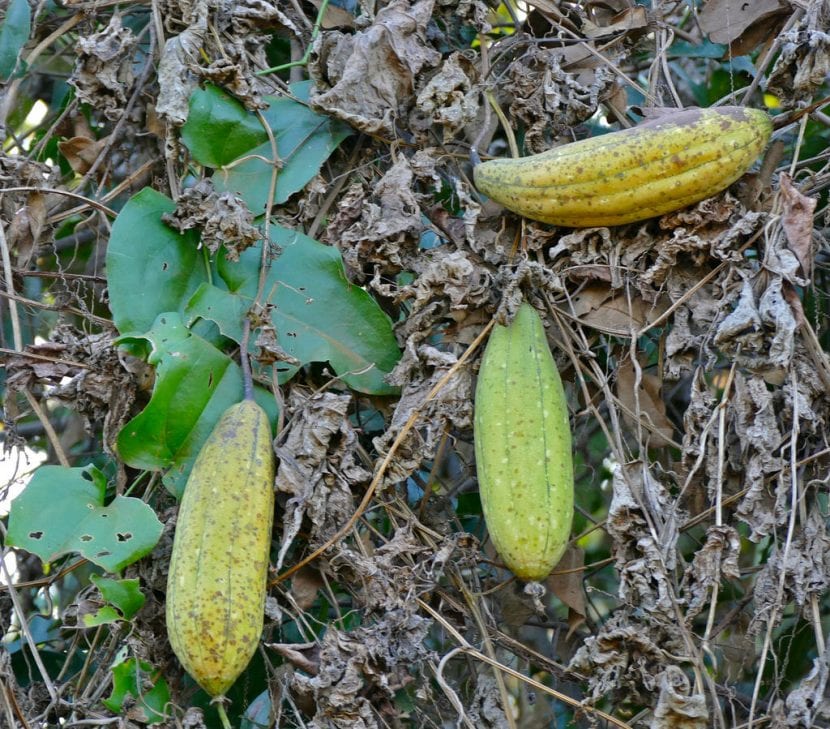
There are many plants that are useful to humans. Who else who least knows a few that are edible and perhaps some that are medicinal. But, Did you know that there is one that can be used to keep our skin clean? Yes, that species exists and is the Luffa aegyptiaca, much better known as vegetable sponge.
It is grown mainly for its fruit, which can be, as you may have already guessed, an essential accessory to take care of hygiene. Would you like to know what care it needs and how you can make the most of it?
Origin and characteristics of the vegetable sponge

The loofah it is a climbing plant with an annual cycle native to Asia and Africa where it lives in regions with a tropical or subtropical climate. It can reach a height of 4-5 meters, using its tendrils. The leaves are palmate, green, and its flowers are yellow, consisting of five petals. The fruit is very reminiscent of cucumber: it is long, up to 20-30cm, and about 4cm thick.
Its growth rate is very fastSo if you need a bit of shade in the summer, feel free to plant it near a lattice so it can climb over it.
What care do you need?

Give it these cares so that it can produce a large quantity of fruits:
- Location: outside, in full sun.
- Soil or substrate: it is indifferent, but it is highly recommended that it has good drainage, something that can be achieved by adding perlite, washed river sand or similar to the soil or substrate.
- Irrigation: frequent. It should be watered 3-4 times a week in summer and every 3-4 days the rest of the year.
- Subscriber: important to pay with Organic fertilizersand guano, throughout the season.
- Multiplication: by seeds in spring. Direct sowing in seedbed.
- Uses: as a vegetable sponge. It is wrapped in newspaper for two months and, after that time, the skin is removed. If it is light brown in color, it will be a very good sign, as this will indicate that it has dried well. Then, we will only have to put them in a container with water to clean it for about 30 minutes and finally let it dry on newspaper.
- Rusticity: it does not support cold or frost.
Did you know this plant?
hello after the harvest the silver dries
Hi Carina.
Yes, it is normal for it to dry out, as its life cycle is annual; that is, in one year it germinates, grows, blooms, and then dies.
Regards!
He did know the plant. My grandmother had it at her house in Corrientes, Argentina. From the last harvest (3 years ago) we got a lot of seeds and I brought myself to Mendoza. A month ago (October, 2020) I germinated them and they were absolutely all. Now I have put them on the ground. Many of them already have 3 leaves. I hope they survive the winter here, I'm going to have to take care of them a lot.
Hello Analía.
Well, good luck with your little plants. If you want, you can visit our article on how to make a greenhouse, to have them more protected, click here.
Greetings.
Hello, how are you? I have the plant and the flowers appeared but I don't know what happens if the flower closes or is eaten by some bug that I did not find. Please can you explain what I have to do. Thank you very much
With what name is the seed called and in what season of the
Year is sown